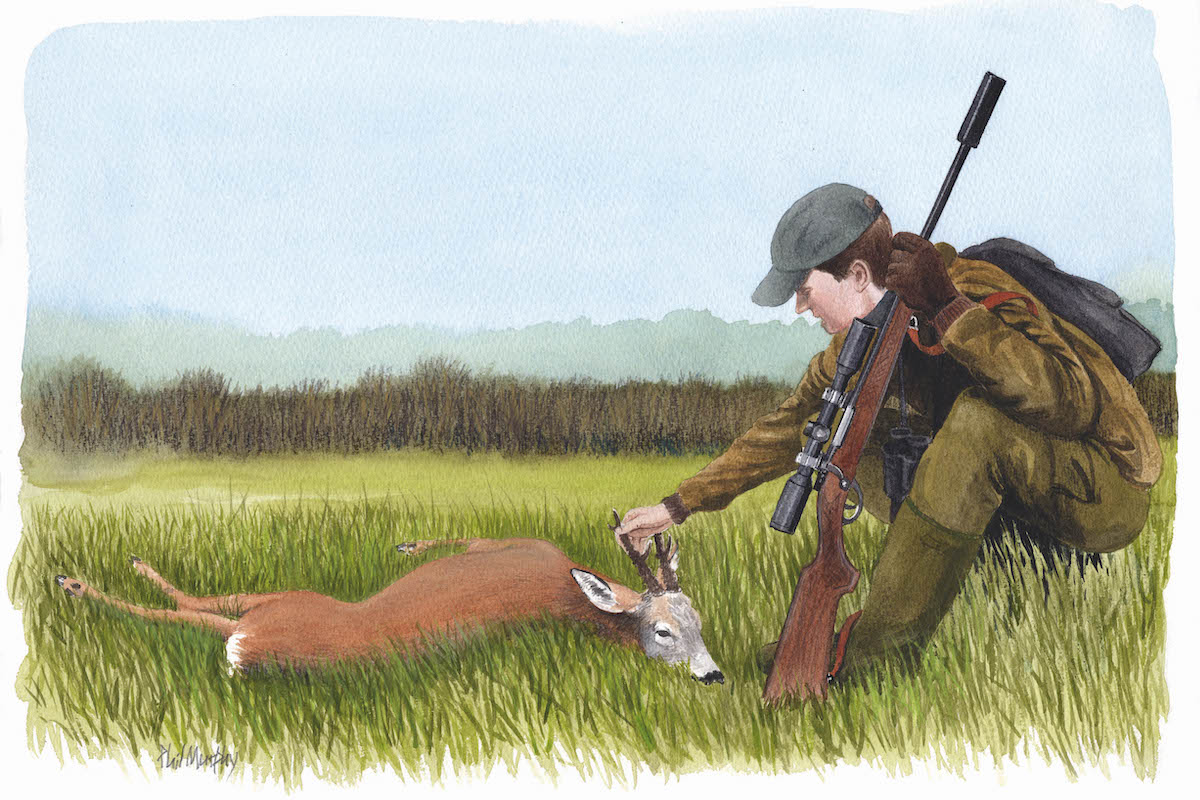Keeping livestock safe
Fox controller Graeme Kelly on how the latest night vision equipment can give the edge when it comes to keeping farmers' livestock safe

On a Friday in February, I waited at my burger van for Tony Jones to arrive from Yorkshire for what would hopefully be another enjoyable weekend of foxing. As usual, the weather was absolutely rotten: cold and raining, with high winds.
I usually finish work at 1pm but, with the weather being so bad, I threw in the towel at 12 noon, just as Tony arrived. After a quick chat over coffee and a bite to eat, we headed off to test some of the latest thermal and night-vision equipment on a farm where I have permission for foxing.
As we drove into the farm, there was a welcome break in the weather. The last thing we wanted was rain because it would compromise the performance of the thermal scope. I fitted the scope on to my Tikka .243 rifle and nipped-up the fitted clamps. Then, lying prone, I composed myself and took two steady shots at a target. Both shots were touching — perfect.

The scope fitted quickly onto the .243, proving that these sights don’t tie up a rifle for night shooting
This goes some way to challenging the concept that these sights are “dedicated” and tie up a rifle for night shooting.
Roe deer
With the rifle still on zero I changed over to my daytime scope, then it was time to move on to another piece of ground. This bit of permission came from a man called Hamish, who works in Kinross. He came to my van for lunch and realised I was a keen foxer, so granted me the rights to shooting foxes and deer on his land at Lochend Farm.
Working our way uphill, we changed direction at the top. The wind was blowing in my face and Brae was standing as stiff as a board with her head held high and her nose twitching. That meant only one thing — roe. Seconds later, a roe deer came out from cover, ran 40 yards and cleared a fence. I quickly chambered a home-loaded bullet and hit the ground. Luckily for me, the deer stopped broadside on; I placed the shot directly behind the front elbow and down she went.
Spotting a fox
After a quick field dressing and a tidy-up of the gralloch, we walked on, hoping to account for a fox. Within the next couple of hours, it would be getting dark, or “duck time” as I call it. We had a scout around with the thermal spotter, but saw only rabbits and birds, so decided to head back. This time the wind was against us as we walked the brow of a hill. Through the thermal spotter, I glanced downhill to my left and could see a fox about 300 yards away.

Graeme had shot the area before so he knew the lie of the land
I had shot here for some time and knew the lay of the land. I decided to go wide so that we could sneak up a banking to look down on the fox. After a 20-minute stalk, we crept over the banking and lay down on the soaking grass. I saw the fox again with the XD38S spotter; it was a big dog fox. Tony was using the rifle with the thermal scope and quickly picked up our quarry. Not being familiar with the land, he hesitated for a second while checking the backstop. The fox quickly made its way along a cattle track on the banking. Thermal devices can take a little getting used to because your brain has to process a thermally enhanced image. It can be clearer than high-end night-vision equipment but, as with anything else, it may take a couple of outings to become familiar with it.
We stalked over to the edge of the hill where we thought the fox was going to reappear, but the wind was blowing hard from the rear. The fox revealed itself, but before I could get the cross-hair on it, it sped off like a train back to whence it came. This wily fox had used one of its best senses (and defences) and winded us. Given the wind direction during this chance second sighting, it was always going to happen, but it was worth a try.
However, that wasn’t the end because, from watching this fox I had learned a little about its habits. I planned to return to the area in the hope of meeting it again.
Graeme’s top tips
- When zeroing a thermal scope, you need a defined heat source as a target. Using a piece of MDF with a 1in hole and a heat pack attached to the back of the hole works well.
- If you want to be able to remove a night vision or thermal scope, use a precision-machined mounting rail. The Tier-One rails and scope mounts are the best I’ve used.
- Thermal-imaging equipment can take a short while to get used to, especially if you have been using night-vision equipment. Once your brain starts to process the thermal images, it becomes an incredible tool.
- Take note of wind direction and use it to your advantage.
Who is Graeme?
Graeme Kelly is a professional fox controller. He is also equipment advisor and tester for Night Master. He grew up in Fife, Scotland, and his uncle introduced him to the world of airguns as a child, but it wasn’t until he left home and bought himself a gundog that he discovered gameshooting. As well as picking-up, he spent a lot of time helping keepers and lamping foxes at night with them. It was then that he got his firearms certificate and bought his first gun, a second-hand Tikka .243 rifle.








